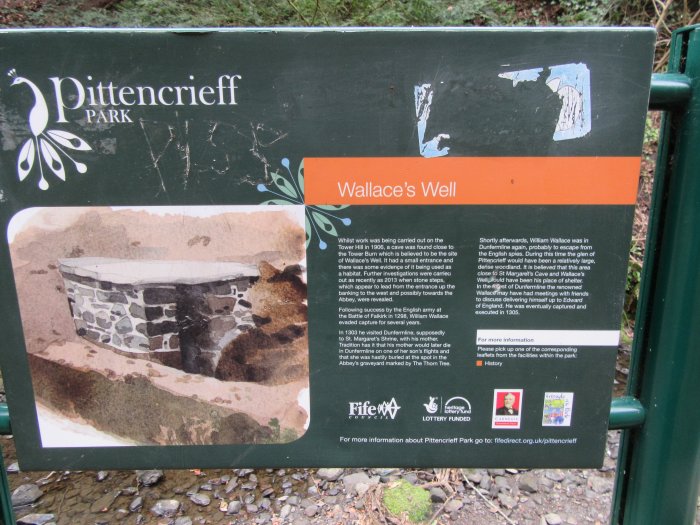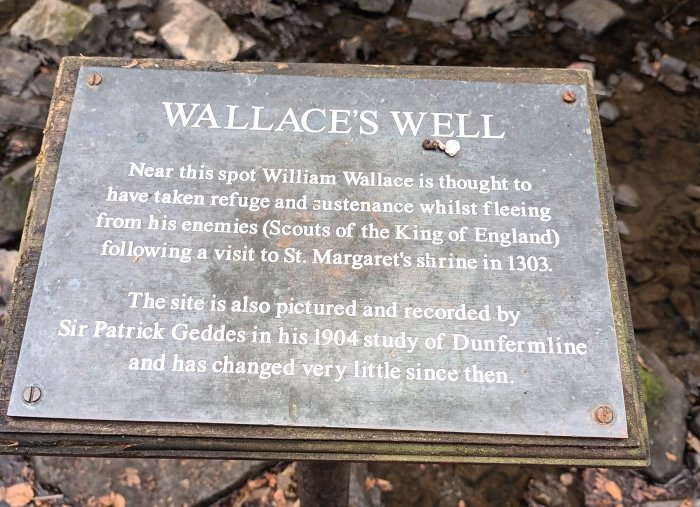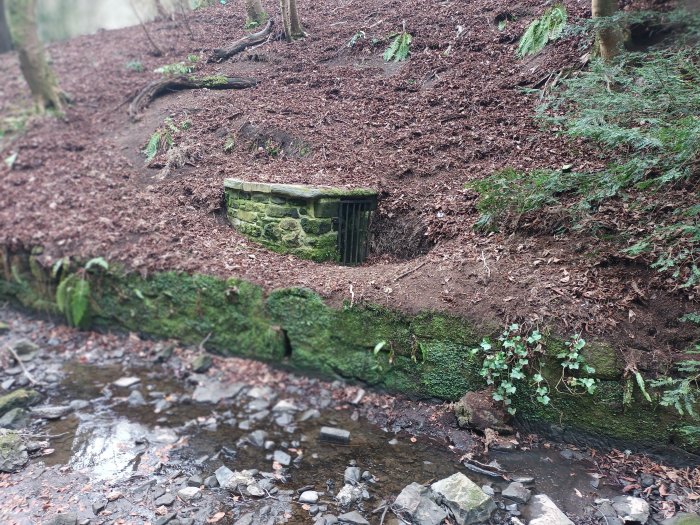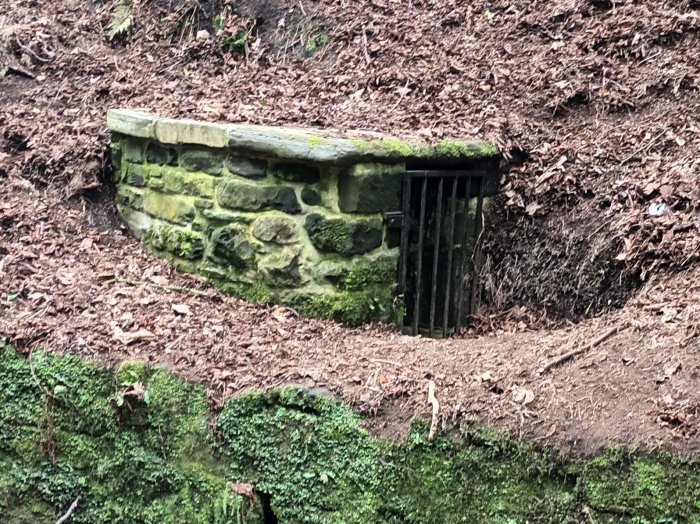WALLACE'S WELL, PITTENCRIEFF PARK |
 |
Whilst work was being carried out on the Tower Hill in 1906, a cave was found close to the Tower Burn which is believed to be the site of Wallace's Well. It had a small entrance and there was some evidence of it being used as a habitat. Further investigations were carried out as recently as 2013 when stone steps, which appear to lead from the entrance up the banking to the west and possibly towards the Abbey, were revealed. Following success by the English army at the Battle of Falkirk in 1298, William Wallace evaded capture for several years. In 1303 he visited Dunfermline, supposedly to St. Margaret's Shrine, with his mother. Tradition has it that his mother would later die in Dunfermline on one of her son's flights and that she was hastily buried at the spot in the Abbey's graveyard marked by The Thorn Tree. During this time the glen of Pittencrieff would have been a relatively large, dense woodland. It is believed that this area close to St Margaret's Cave and Wallace's Well would have been his place of shelter.   Annals of Dunfermline: 1303.— Sir William Wallace and his Mother, in disguise, travel on foot from near Dundee to Dunfermline. — Some time in the autumn of 1303 the renowned Sir William Wallace, "in hiding at or near to Dundee," finding that he was being surrounded by scouts from the King of England's army and by "sworn enemies, his countrymen," suddenly left his hiding-place in disguise, and armed with a concealed sword only. His mother, also in disguise, accompanied him, and both on foot set out on travel for the south, and, according to Langtoft's Chronicle, they crossed a ferry over to Lindores, then through the Ochils for the south, and that when they were asked by any way-farer as to where they were going, made answer that they were going to St. Margaret's Shrine at Dunfermline. Whether this was really their place of destination or not, the answer they gave would secure them ecclesiastical protection, and allow them to proceed without molestation. Langtoft states: “His modyr graithit (1) hir in pilgrim weid; (2) Hym (selff) disgysyt, syne glaidlye with hir yeid, (3) A schort swerd (4) wndyr his weid (5) priuale, In all that land full mony fays (6) had he. Baith on thar fute, with tham may tuk thai nocht Quha sperd, she said to Sanct Margret thai socht, Quha serwit hir. Full gret frendschipe thai fand With Sothroun folk, for scho was of Ingland. Besyde Landoris the ferrye oure thai past, Syne throw the Ochell sped theim wondyr fast. In Dunfermlyn thai lugyt all that nicht. (Langtoft’s Chronicle, p. 322.) (1) Dressed (2) Pilgrim dress (3) Went, or travelled (4) Sword (5) Dress, Privately (6) Foes   |
|
Bibliography Henderson, Ebenezer. 'The Annals of Dunfermline and vicinity - from the earliest Authentic Period to the Present Time A.D. 1069 - 1878', John Tweed, Glasgow, 1879 - pp 107-9 Langtoft, Peter. "Chronicle of England, Part 3: The Reign of Edward I". Cambridge Digital Library. Retrieved 10th December 2020 Pittencrieff Park restoration project leaflet, supported by the Carnegie Dunfermline Trust and Fife Council (local publication) c. 2018 Pittencrieff Park information boards. |
| © Society of William Wallace 2007-2024 | The Society of William Wallace is a Scottish Charitable Incorporated Organisation Registration number SC045959 |
